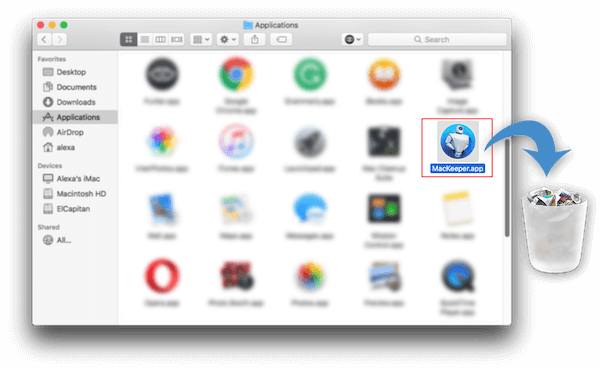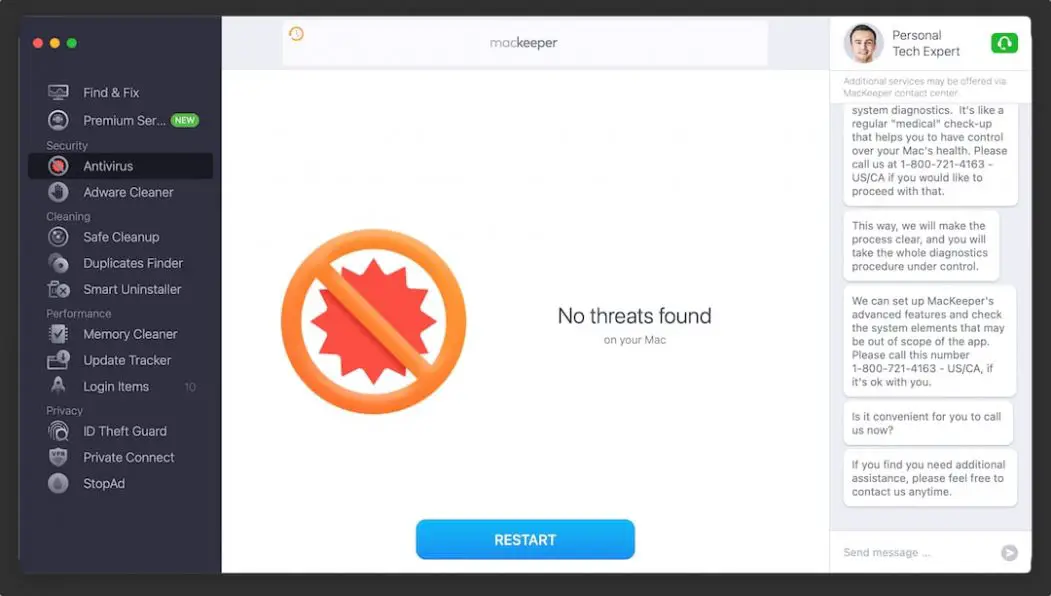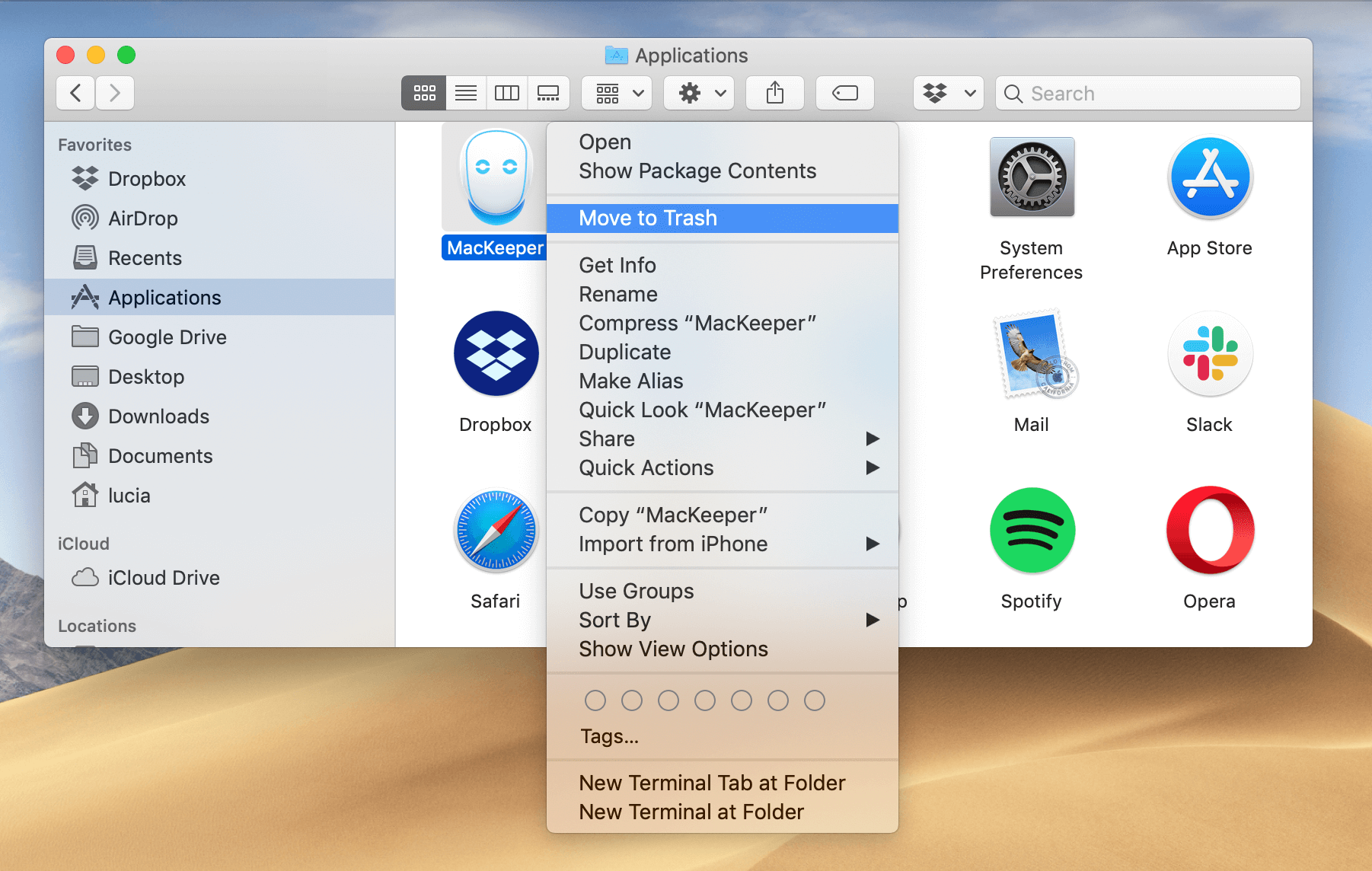

- #Deleting mackeeper how to
- #Deleting mackeeper update
- #Deleting mackeeper full
- #Deleting mackeeper code
- #Deleting mackeeper mac
There’s a help command that will output the documentation to the command line, and also if you get into the habit of regularly running command line checks, don’t forget to launch the app from time to time in the Finder. Here’s an example of what the formatted JSON file looks like: Sudo detectx search -aj ~/Desktop/searchtest.json Or, by passing the extra -j option, in JSON format: Sudo detectx vvvv -a ~/Desktop/searchtest.txt You can specify a path to output the results, either in regular text: If you’d like more verbose output, including how long the search took, try either the vsearch or vvvv commands: If you want to restrict the search to one or more users, the -u option allows you to specify a list of shortuser names (comma-delimited): You can search all users by using sudo and the -a option: Probably the most important benefit you gain with scanning on the command line rather than from the app’s interface is the ability to scan all, or selected, other users. We’re going to need that so that we can pass the alias to sudo when we want to pass certain options to the search. Note the sudo line (and note the extra space in the value). bash_profileĪlias detectx='/Applications/DetectX\ Swift.app/Contents/MacOS/DetectX\ Swift' bash_profile to include a shortcut alias. Since that’s a bit of a handful, even using tab completion, you might want to edit your. Applications/DetectX\ Swift.app/Contents/MacOS/DetectX\ Swift search In that case, you’d need to execute this on the command line: In this example, let’s suppose that the app is in /Applications folder.
#Deleting mackeeper full
To use the CLI search, you need to specify the full path to the app executable.
#Deleting mackeeper how to
In this post, I’m going to give you a quick tour of the CLI (Command Line Interface) tool with some examples of how to use it (if you haven’t yet grabbed a free copy of DetectX Swift you might want to do that first to play along).
#Deleting mackeeper mac
Otool -oV /Volumes/Installer/Installer.app/Contents/MacOS/hemorrhoid | grep name | awk ''ĭetectX Swift now has the ability to do command line searches for issues on your mac like malware, keyloggers, browser hijacks and potentially dangerous software, and there’s a number of extra options that are not available when using the user interface. My next tack was to dump the class names with Every time I tried to attach the debugger to the Installer’s process, the installer quit with “status = 45”, a sign that the debugger is being deliberately thwarted. That gave me pause to try and run the Installer in the lldb debugger and see exactly what it was up to, but – also another sign of malware – the Installer.app appears to have been coded precisely to stop that from being possible.
#Deleting mackeeper code
Examining both the binary and other files in the Installer bundle revealed some heavily obfuscated code that is really quite unusual to see in anything except malware. For one thing, the bundle identifier (a reverse domain-name style string used to uniquely identify an app on macOS) was the oddly titled, and the executable binary file was named hemorrhoid. After a support call asking me whether the MacGo player itself was malicious, I decided to look into what was going on in a bit more detail.ĭownloading the Mac Media Player from the developer’s site rewarded me with a DMG file called Macgo_Mac_Media_Player.dmg, and mounting that revealed the Installer.app (pictured above).Įxamining the package contents of Installer.app had a few surprises. Last week I added MacGo’s Mac Media Player.app to DetectX’s search definitions after finding that the installer was delivering MacKeeper on unsuspecting users. ~/Library/Application Support/MacKeeper Helper ~/Library/Application Support/MacKeeper 3 Library/Security/SecurityAgentPlugins/MKAuthPlugin.bundle - warning: deleting this file could harm your Mac! Contact me for help. Library/Application Support/MacKeeper/MacKeeperTrackMyMacDaemon Library/Application Support/MacKeeper/MacKeeperATd

Library/Application Support/MacKeeper/AntiVirus.app/Contents/MacOS/AntiVirus Library/Application Support/MacKeeper/AntiVirus.app If you happen to find any that are not on the list, please share in the comments!

#Deleting mackeeper update
Want to remove MacKeeper? The easiest way is to use my free/shareware app DetectX Swift, but if you’re looking to do it yourself, here’s the complete list of all past and current known filepaths.īear in mind that DetectX Swift can find other MacKeeper paths that are not on the list due to its internal search heuristics however, I’ll update this list as new paths come to light.


 0 kommentar(er)
0 kommentar(er)
